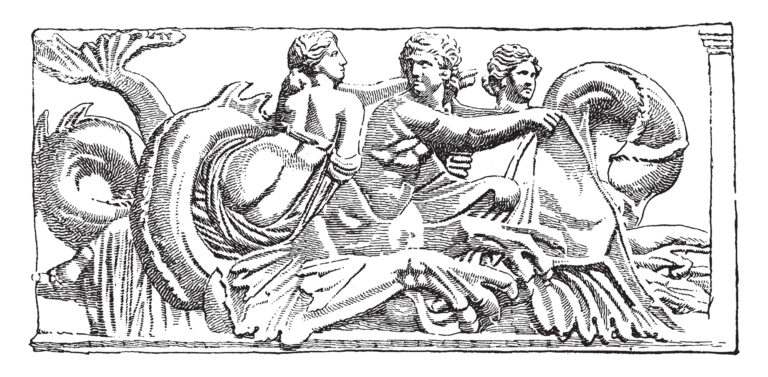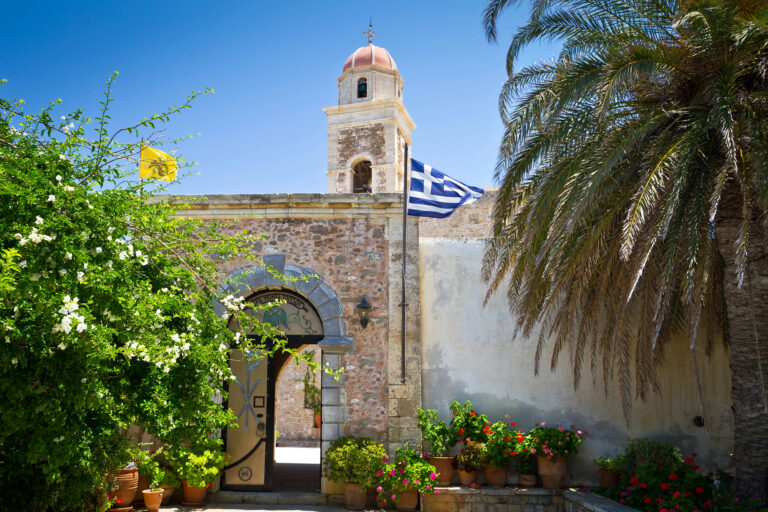The Disappearance of the Icon of Virgin Mary from the Odigitria Monastery
The mysterious disappearance of the Icon of the Virgin Mary from the Odigitria Monastery in Crete is a story that intertwines religious devotion, history, and enigma. This incident, while not as widely publicized as some other historical mysteries, holds a significant place in the religious and cultural landscape of Crete.
Background of Odigitria Monastery
- Location and Significance: The Odigitria Monastery, also known as the Moni Odigitrias, is located in the southern part of the Messara Crete, near the village of Sivas. It is a historic monastery, known for its architectural beauty and religious importance.
- Historical Context: The monastery dates back to the 14th century and has been a centre of religious education and Orthodox Christian faith in the region. It has also played a role in Cretan resistance against Ottoman rule.
The Icon of the Virgin Mary
- Artistic and Religious Value: The icon of the Virgin Mary was reputedly a work of significant religious and artistic merit, venerated by the faithful and considered a treasure of the monastery.
- Description and Features: While specific details about the icon’s artistic style and exact features might vary, such icons typically depict the Virgin Mary in a solemn, compassionate pose, often with the Christ Child.
The Disappearance
- Event Details: The exact time and circumstances of the icon’s disappearance are not clearly documented. It is believed to have vanished under mysterious circumstances, possibly during the 20th century.
- Speculations: There are various theories regarding the disappearance. Some believe it was stolen, possibly for its artistic value, while others speculate that it may have been hidden to protect it from theft or desecration during times of conflict or unrest.
The mysterious disappearance of the Icon of the Virgin Mary from the Odigitria Monastery in Crete is surrounded by speculation and various theories, one of which includes the possibility of it being taken during the Nazi occupation of Crete during World War II. This period was marked by significant upheaval and the looting of cultural and religious artefacts, making this theory plausible. However, it’s important to note a few key points:
- Lack of Concrete Evidence: There is no definitive historical evidence directly linking the disappearance of the icon to the Nazis. While the Nazis did plunder art and religious items across Europe, the specific fate of this icon remains unclear.
- Widespread Looting During WWII: The Nazi occupation led to widespread looting of art throughout Europe, including Greece. Crete, due to its strategic importance and rich cultural heritage, was not immune to such activities.
- The complexity of Art Theft in WWII: The chaos and complexity of World War II make it difficult to track the exact movement and current location of many stolen artefacts. Post-war efforts to recover and repatriate looted art have been ongoing but are often hindered by the lack of records or clear provenance.
- Continued Research and Investigation: Efforts to trace and recover art taken during World War II continue to this day. If the icon was indeed taken by the Nazis, it might still be the subject of ongoing research and repatriation efforts.
- Other Theories: It’s also possible that the icon’s disappearance is unrelated to the Nazi occupation. Theories range from local theft to concealment for protection during turbulent times.
- Cultural Significance: Regardless of its fate, the icon’s disappearance highlights the vulnerability of cultural and religious artefacts during times of conflict and the importance of preserving such heritage.
In summary, while the theory that the Icon of the Virgin Mary from the Odigitria Monastery was taken by the Nazis during their occupation of Crete is a possibility, it remains one of several theories due to the lack of definitive evidence. The icon’s disappearance is emblematic of the broader issue of cultural losses experienced during wartime.
Impact and Aftermath
- Religious Impact: The loss of the icon was a significant blow to the monastery and the local Orthodox community, for whom it held great spiritual significance.
- Search and Investigation: Efforts were presumably made to locate the icon, involving local authorities and the religious community, but the outcomes of these efforts are not widely known.
Contemporary Relevance
- Cultural Significance: The mystery of the icon’s disappearance adds to the cultural and historical mystique of the Odigitria Monastery, making it a point of interest for visitors and scholars alike.
- The Icon in Modern Times: The absence of the icon continues to be a matter of curiosity and speculation. Its potential rediscovery would be an event of great religious and cultural importance.
Broader Implications
- Reflection on Cretan History: This event is reflective of the turbulent history of Crete, where art and religious artefacts have often been caught in the crossfire of historical events.
- Symbolism: The icon, beyond its religious significance, symbolizes the resilience and enduring faith of the Cretan people in the face of adversity.
Conclusion
The mysterious disappearance of the Icon of the Virgin Mary from the Odigitria Monastery is more than a mere historical footnote. It represents a poignant narrative in Crete’s religious and cultural history, embodying themes of faith, loss, and the enduring power of religious art. The story of the icon, while shrouded in mystery, continues to be a subject of reverence and intrigue, underscoring the deep connection between the Cretan people and their spiritual and cultural heritage.







